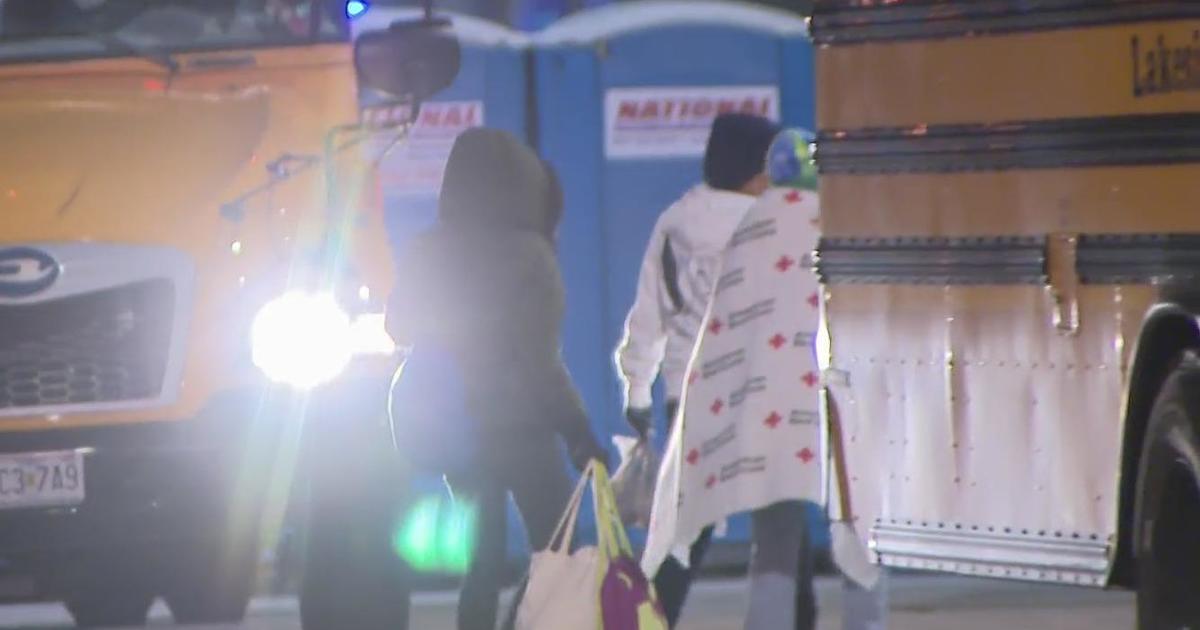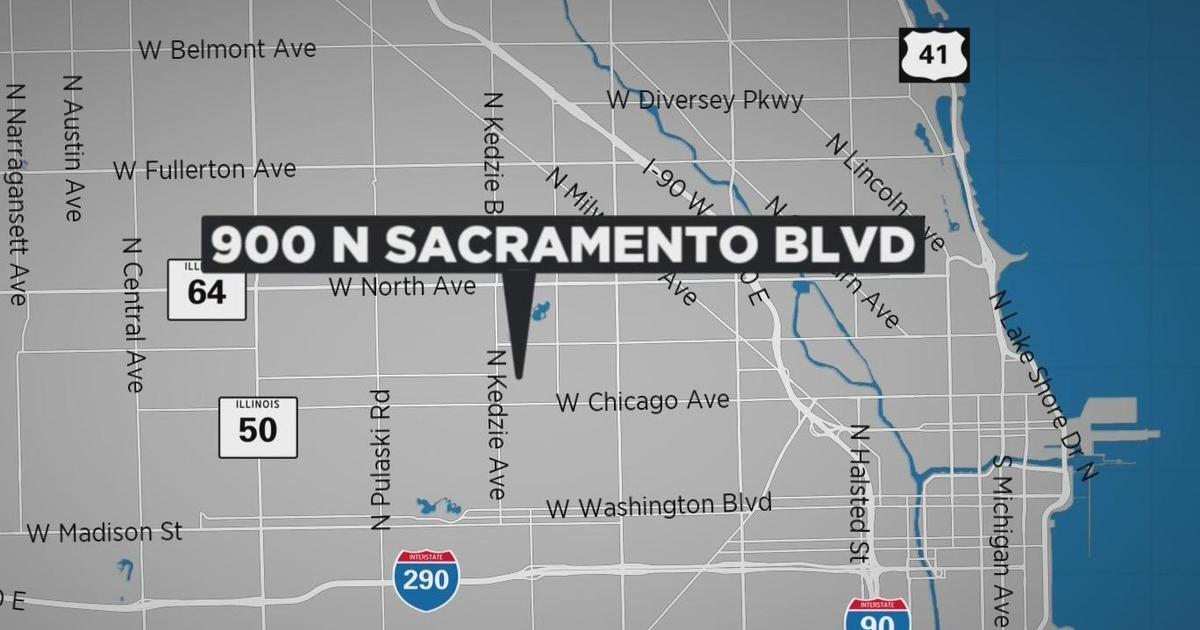Stimulus Check Latest: Track Your Economic Relief Payment From The IRS
(CBS Detroit) -- The latest round of stimulus checks have been landing in bank accounts for over two weeks. As of last week, the number of payments totaled 127 million with a value of $325 billion. The last batch of direct deposits had an official pay date of Wednesday, March 24. Any person who did not receive a direct deposit by that day should be receiving a paper check or EIP debit card in the mail if they're eligible.
The relief payment, worth up to $1,400 per person, is a key part of President Biden's $1.9 trillion economic relief package. The American Rescue Plan Act looks to cushion COVID's economic impact and support the economy while it recovers from the pandemic. The package also extends unemployment benefits, strengthens the child tax credit, and much more. While most people have already received their share of the $422 billion set aside for stimulus checks, others are still awaiting theirs. Many factors could contribute to their longer wait.
When Could My Stimulus Check Arrive?
The American Rescue Plan Act became law ahead of the March 14 deadline, when the previous $300 federal unemployment benefit bonus expired. The IRS, which had twice distributed stimulus checks, started the process again immediately. And people noted economic impact payment (EIP) deposits in their bank accounts within days. Those early recipients tended to be people who had bank accounts on file and submitted recent tax returns.
The President has stated that roughly 85 percent of Americans will ultimately receive money. Over 75 percent of the direct payment money in the recent package has already been distributed. In general, direct deposits arrived more quickly. Paper checks and debit cards, which have to be mailed, can take weeks. At least that was the case for the previous two payments.
Payments go out in large batches. The legislation says the government technically has until the end of 2021 to distribute the money. For most people, it won't take nearly that long.
The IRS has a helpful tool called 'Get My Payment' to track the status of your stimulus check.
What Can 'Get My Payment' Tell Me?
The 'Get My Payment' portal launched soon after the CARES Act, which included the first stimulus payment. The Internal Revenue Service (IRS) tool is designed to give status information to those expecting stimulus payments. However, the IRS's responses on the site sometimes require some clarification.
Many people will receive a payment status message stating that their payment has been processed. The message will also include a payment date and how the payment is to be sent, meaning direct deposit or mail. Other people will be told that they're eligible, though the payment is awaiting processing. No date will be given, because it is pending.
'Get My Payment' may also state that your payment status is not available. That could mean that the IRS has not processed the payment, does not enough information to send out a payment, or the potential recipient is ineligible.
The portal could instead say that more information is needed. That means the post office failed to deliver your payment and returned it to the IRS. According to the Agency, the best way to update an address is to submit a 2020 tax return. ('Get My Payment' doesn't allow users to change their address in the system.)
The tool could also tell you to try again later. The system limits a user to three failed login attempts and five successful logins over 24 hours. So receiving this message could mean that your information doesn't match what the IRS has on file or that you have logged in too many times.
What Could Delay My Stimulus Check?
The IRS needed to have current bank account information, which they've used to issue a tax refund. They couldn't make a payment to someone using an account and routing number they previously only used to accept payment. The IRS also requires recent earnings and personal information to issue the proper payment. For the first stimulus check, that came from 2018 or 2019 tax filings. For the second stimulus check, it came from 2019 tax filings. The IRS is pulling that information from 2019 or 2020 tax filings this time around.
So anyone who didn't have recent information on file with the IRS could be looking at delays. That may include someone who just moved or changed banks. It might also include someone who hasn't filed a tax return for 2019 or 2020. Many people don't file tax returns because they don't make enough money to pay taxes. Not coincidentally, these are also generally the people who most need stimulus payments.
Another potential delay stems from the method people use to file their taxes. Those who submit returns by mail may also experience delays in receiving their stimulus payment. Paper returns take longer to process than electronic returns, and the agency is experiencing a backlog brought on, at least in part, by the pandemic. As with most office workers, many IRS employees have had to do their jobs from home. Paper returns were inaccessible and sat waiting in trailers. About 6.7 million returns had yet to be processed by the end of January.
As of last week, any pending stimulus checks will be sent by mail. That includes the batch of 15 million paper checks and five million EIP debit cards. But the U.S. Postal Service has its own issues, including deepening financial losses. Addressing their issues is a long-term problem. But the slow delivery times that have become the norm are creating short-term issues for those expecting checks.
The IRS prioritized sending payments to those with current information in their system, meaning those who filed their taxes for 2019 or 2020 or used the non-filers tool when it was available last year. However, some recipients of Social Security who don't file taxes have also experienced delays. Members of the House Ways and Means Committee estimated that about 30 million Social Security recipients were still awaiting a stimulus check as of last week.
According to a letter from the House Ways and Means Committee to the heads of the IRS and SSA, "Over the past year, the IRS and SSA have worked closely together to ensure that the previous rounds of direct payments were paid promptly and automatically to these beneficiaries, even if they do not normally have a tax return filing requirement because they fall below the income threshold for filing."
But as the Committee sees it, that cooperation has fallen short this time around. "Some of our most vulnerable seniors and persons with disabilities, including veterans who served our country with honor, are unable to pay for basic necessities while they wait for their overdue payments."
The Committee urged the agencies to fix the matter right away. The SSA confirmed last Thursday that the necessary payment data had been sent to the IRS. Sending stimulus checks to those 30 million Social Security recipients is now up to the IRS. The Agency has since said "we anticipate proceeding to make the payment soon."
What If The Amount Is Wrong?
The topline $1,400 number that's drawn so much attention isn't necessarily what people receive. The actual amount could be different based on income restrictions, the number of dependents and other factors.
This stimulus package phases out checks more quickly than the previous two. So while the income threshold remains at $75,000 ($150,000), those earning $80,000 ($160,000) or more will receive nothing. If the phase out progresses at a constant rate, that would mean people would receive $.28 less for every $1 they earned over the limit. Put another way, that means those with an Adjusted Gross Income (AGI) of $76,000 should receive $1,120, and that total would fall by $280 for every additional $1,000 of income.
The American Rescue Plan expands the pool of eligible dependents to include dependents over the age of 16. In that group are college students and older adults with certain kinds of disabilities. The change makes an estimated 13.5 million more people eligible to receive stimulus checks. As an example, what if an adult with two kids and an income under $75,000 also has a third dependent in college? She would receive $5,600 this time around. Assuming the new faster phaseout, that amount would decrease to $4,200 at an AGI of $80,000; $2,800 at an AGI of $85,000; $1,400 at an AGI of $90,000 and $0 at an AGI of $95,000.
Those whose dependent status has changed -- perhaps because of a child born last year or a dependent family member who now qualifies for stimulus -- may receive an incorrect payment. The IRS won't know about a 2020 baby until the parents submit their 2020 taxes. So they would issue $2,800 to a married couple who welcomed their first child last year but had yet to file. Once those parents submit their 2020 taxes, the agency would automatically send out an additional $1,400.
A similar issue could arise with families who don't typically file but used the non-filer tool to update their dependent count last year. Dependents above the age of 16 weren't previously included, so the IRS won't have them on record. Filing a return for 2020 could ensure that they do.
Those without dependents might also see their third stimulus check affected by their taxes. Income changes from year to year, as people receive raises, switch jobs or become unemployed. When the first relief payment was passed in March of 2020, some people had filed their 2019 taxes and some had not. So the check amount could have been based on 2018 or 2019 taxes. The second relief payment became law in December of 2020, after most everyone had filed their 2019 taxes. So that amount was determined by 2019 tax filings.
The third relief payment was signed over two months before the revised federal tax deadline (May 17). The amount could be based on an individual's 2019 or 2020 taxes, depending on when someone files. The past year has seen significant unemployment, which can hurt a household's finances. Many others have seen their hours reduced. If your income changed significantly from one tax filing to the next, so too could the amount of your stimulus check.
Why Do We Need Stimulus Checks?
The economy shrank by 3.5 percent in 2020, the largest single-year decline since the end of World War II. Approximately 684,000 people initially applied for unemployment insurance in the third week of March. That is almost 100,000 fewer claims than the prior week and the lowest number since the start of the pandemic. (Weekly unemployment figures remain historically high; a typical pre-pandemic week saw about 250,000 new unemployment applications.) An additional 241,000 sought Pandemic Unemployment Assistance.
Approximately 18.2 million people were receiving unemployment benefits of one kind or another as of the end of February. That's roughly one out of every nine workers. While the official unemployment rate is 6.2 percent, the actual rate is probably closer to 10 percent, given all the people who have dropped out of the labor force. On the bright side, employers added another 379,000 jobs last month.
An economic bounceback depends on the widespread distribution of a COVID vaccine. And efforts to inoculate the public are progressing by the day. Americans have received over 145 million doses, with 28.6 percent of the population having received at least one dose and 15.8 percent completely vaccinated. Vaccination numbers continue to increase at a rate of over 2 million doses per day. In a show of continued optimism, the President Biden increased his vaccination target from 100 million doses in the first 100 days of his presidency to 200 million doses.
Three different vaccines are available to the public, since the Food & Drug Administration authorized Johnson & Johnson's one-shot vaccine. The President recently stated that the country will have enough doses to vaccinate all Americans by May. Actually putting needles in arms will likely take longer, though many states have lowered the necessary age to qualify. Mask-wearing and a general lack of normalcy could continue into 2022. Currently, domestic COVID cases exceed 30 million, while deaths have surpassed 550,000.
Originally published on Monday, March 22 @ 4:00 p.m. ET.



